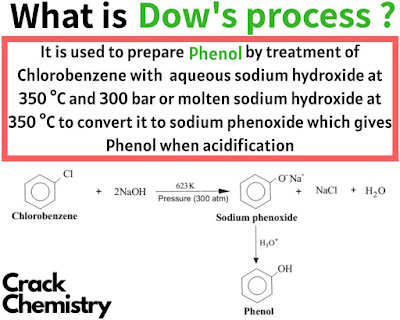Phenol – General View
Phenol is the simplest Aromatic Alcohol with the Molecular formula of C₆H₅OH.
This Molecule consists of the Phenyl Group (-C₆H₅) attached to the hydroxy group (-OH).
It is Acidic in Nature, it requires additional careful handling due to its acidic nature.
Phenol – Structure
 |
| Structure of Phenol |
Molecular Formula: C₆H₅OH
In Phenol, all ring carbon atoms are sp² hybridized and the Oxygen atom of the -OH group is sp³ hybridized
 |
| Hybridization of Phenol |
• All Ring Carbon Atoms also have a p orbital and there are perpendicular to the plane of the Sigma Bond of the Ring.
• The Lateral Overlap of this p orbital produces a delocalized π molecular orbital
• There are Two Lone Pair of Electrons Present in the Oxygen Atom in the -OH group
Phenol – Resonance
According to the resonance theory, Phenol is considered to be a hybrid of the following resonance structures.
You can Notice that the Ortho & Para position in the resonance structure has a negative charge.
So Phenol undergoes Electrophilic Substitution reactions (E⁺)
Due to the presence of the -OH group, It undergoes Electrophilic Substitution faster than Benzene.
Because The Hydroxyl group donates the pair of electrons to the ring resonance.
Phenol – Preparation
Phenol can be prepared by
From Chlorobenzene (Dow Process)
This involves the hydrolysis of the chlorobenzene with aqueous NaOH at high temperature and pressure followed by treatment with dilute HCl
 |
| Dow’s Process |
It was first introduced by Dow Chemical Company In the U.S.A
Mechanism of Reaction
 |
| Mechanism of Dow’s Process |
Phenol – Electrophilic Substitution reactions
Electrophilic Substitution reactions Listed in this Post are
• Halogenation Of Phenol
• Nitration Of Phenol
• Sulfonation Of Phenol
• Formylation Of Phenol
Halogenation Of Phenol:
Phenol reacts with bromine water (aqueous bromine) to give a precipitate of 2,4,6-tribromophenol.
This Reaction is also used in the laboratory to predict the Saturation/unsaturation Test of Organic Compounds.
 |
| Bromination of Phenol |
Nitration Of Phenol:
• When phenol reacts with Dilute Nitric Acid.
It gives a mixture of o- and p-nitrophenol.
 |
| Nitration Of Phenol |
• When phenol reacts with an Excess Concentrated Nitric Acid. It gives Picric Acid
 |
| Nitration Of Phenol – Excess |
Sulfonation Of Phenol:
When Phenol is treated with concentrated sulfuric acid at 20°C.It forms o-phenol sulfonic acid as a product
 |
| Sulfonation Of Phenol |
Reimer-Tiemann Reaction – Phenol
• This involves the treatment of Phenol with Chloroform in an aqueous Sodium Hydroxide solution followed by acid-hydrolysis.
• It forms Salicyaldehyde as a product.
• Carbene Formed as an Intermediate
 |
| Formylation of Phenol |
To View Complete Reaction Mechanisms of Reimer Tiemann Reaction
Kolbe Reaction – Phenol
This involves the treatment of sodium Phenoxide with carbon dioxide at 125°C under 6 atmospheres of pressure followed by acid-hydrolysis. It forms Salicylic acid at the end of the Reaction.
 |
| Kolbe Reaction |
Phenol – Properties
• Phenol is a Colorless, hygroscopic, crystalline solid
• Melting Point of Phenol – 42°C
• Boiling Point of Phenol – 182°C
• Phenol has a distinctive odor.
• Phenol is readily soluble in Ethanol and Organic solvents
• Below 65.8°C Phenol is Only Partially miscible with water but above this temperature, it is miscible in all proportions
Workout Test – Phenol
Also, Check Our Other Posts
Check it Out..!
Originally posted 2022-10-25 10:57:00.



